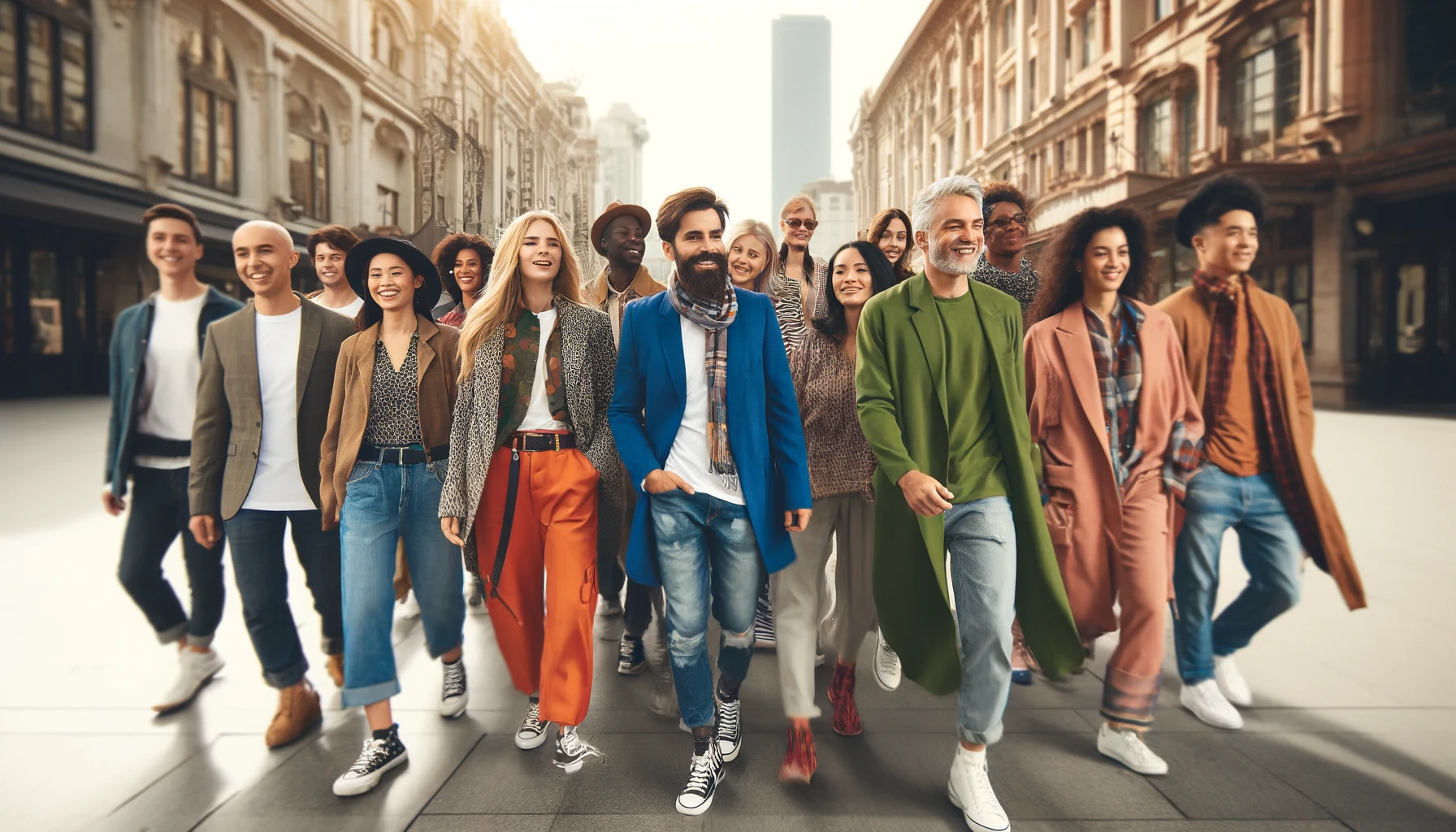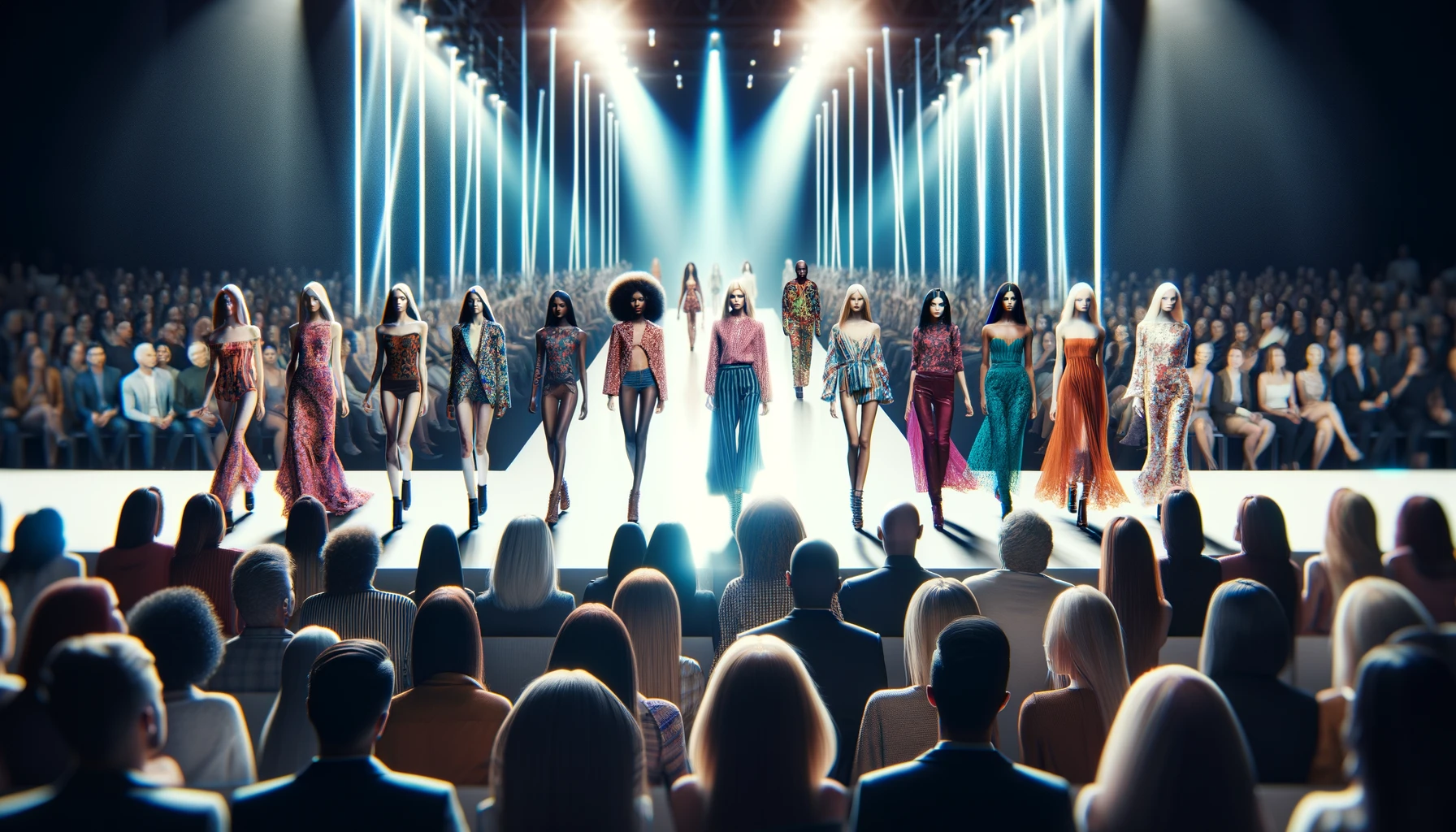The fashion industry has changed. Now it is moving towards inclusivity and body positivity. This is because people understand that beauty comes in all shapes, sizes, colors and identities. The concept of diversity in fashion is about changing aesthetic norms and promoting equality and respect across the spectrum of human experience.

The Rise of Diversity in Fashion
A Historical Perspective
The journey towards diversity in fashion has been gradual but noticeable. For decades, the industry mirrored narrow beauty standards that excluded many for their body type, race, or age.
Influencers and Icons
Individuals like Naomi Campbell and designers like Christian Siriano have been instrumental in pushing the boundaries. Campbell's advocacy for models of color and Siriano's commitment to plus-size fashion have set new standards that challenge the industry's status quo.
Industry Reports and Insights
According to McKinsey & Company's "The State of Fashion" report, brands that prioritize diversity not only foster greater creativity but also achieve better financial performance. This underscores that embracing diversity is not merely a moral imperative but a business strategy that leads to growth and innovation.
Body Positivity and Inclusivity in Fashion
Redefining Beauty Standards
The movement towards body positivity challenges the traditional definitions of beauty that have long dominated fashion. It is about the acceptance of all bodies regardless of size, shape, or appearance and promotes the idea that everyone deserves to feel beautiful and represented.
The Role of Media and Advertising
Publications like Vogue have begun to feature models of all sizes and backgrounds, significantly impacting how people perceive beauty and fashion. These platforms have the power to create and change narratives, making it crucial for them to lead with responsibility and inclusivity.
Supporting Studies and Articles
Research and articles from reputable sources such as The Business of Fashion provide empirical evidence on the positive impact of inclusivity in fashion. These studies often highlight how inclusive practices can increase brand loyalty and consumer satisfaction by resonating with a broader audience.
Celebrating Diversity on the Runway
Breaking Barriers in Fashion Shows
The fashion runway, once the bastion of exclusivity with models fitting a very specific body type and ethnicity, has transformed into a diverse spectacle. This shift is evident in major fashion weeks around the world, where designers are showcasing a broader spectrum of beauty and form. The inclusion of models from various backgrounds, ages, and body types is not just a nod to diversity but a robust celebration of it.
Notable Examples of Inclusive Runways
Brands like Fenty by Rihanna have been pioneers in this area, consistently highlighting the importance of diversity. Rihanna’s shows are celebrated for their inclusivity, featuring models of all skin tones, sizes, and with features that defy the conventional standards of beauty. Similarly, Chromat and its founder Becca McCharen-Tran have made headlines for championing body positivity and diversity, influencing the industry at large.
Impact of Diversity on Brand Perception
The Council of Fashion Designers of America (CFDA) emphasizes the importance of diversity as integral to the industry's future. By featuring diverse models, brands not only align themselves with ethical standards but also resonate more profoundly with global audiences, enhancing their appeal and relevance.
Inclusive Fashion Campaigns
Pioneering Campaigns for Change
Inclusive fashion campaigns have been pivotal in altering perceptions and driving consumer engagement. Aerie’s #AerieREAL campaign, which famously swore off retouching photos of models, brought real bodies into the spotlight, celebrating natural beauty and flaws. This move not only boosted Aerie’s market share but also set a benchmark for authenticity in advertising.
Case Studies of Success
Savage x Fenty is another exemplary brand that leverages inclusivity as its core strategy. Rihanna’s lingerie brand has been at the forefront of inclusivity, not just in terms of body diversity but also in embracing all genders and ethnicities. The brand’s high visibility and commercial success are testament to the consumer demand for brands that reflect real-world diversity.
The Role of Social Media in Amplifying Messages
Social media has become a powerful platform for promoting inclusivity. Brands and influencers use these platforms to showcase diverse models, engage with a broader audience, and challenge outdated norms. The immediate feedback loop on social media also allows brands to quickly gauge public reaction and adapt their strategies accordingly.
Empowering Through Representation
The Power of Seeing Oneself Reflected in Fashion
Representation matters. When people see themselves reflected in the fashion industry, it not only validates their existence but also boosts self-esteem and confidence. Brands that embrace this ethos are not only praised for their inclusivity but also tend to build a loyal customer base.

Influencers Leading by Example
Influencers like Ashley Graham and Winnie Harlow have used their platforms to advocate for diversity and challenge the norms. Their presence in the industry and participation in high-profile campaigns have helped shift beauty standards towards a more inclusive approach.
The Broader Impacts of Diversity in Fashion
Shifting Industry Standards
The embrace of diversity in fashion goes beyond mere representation; it is reshaping industry standards and expectations. As more brands recognize the value and importance of inclusivity, there is a significant shift towards more ethical practices within the industry. This change reflects a growing awareness that fashion is not only about aesthetics but also about social responsibility and cultural sensitivity.
Economic Benefits of Inclusivity
Diversity is not just a moral imperative but also a strategic advantage. Brands that are inclusive tend to see higher engagement and loyalty from consumers, which translates into better sales and profitability. A diverse approach allows brands to tap into new markets and demographics, offering products that appeal to a broader audience. This economic incentive is driving more companies to consider inclusivity as a core part of their business model.
Educational and Cultural Impact
Fashion has the power to educate and influence cultural norms. By promoting diversity, the fashion industry plays a crucial role in teaching consumers about acceptance and respect for different cultures and body types. This cultural shift can have far-reaching effects, influencing other sectors and helping to create a more tolerant and diverse society.
Conclusion: Embracing a New Era of Fashion
The journey towards diversity and inclusivity in fashion is ongoing and far from complete, but the progress made thus far is undeniable. Celebrating body positivity and inclusivity is not just about keeping up with trends but is a necessary evolution towards a more equitable and respectful world. Fashion brands have a unique platform and the ability to effect significant change, not only within the industry but also in society at large.
The Role of Consumers
As consumers, we hold power. By choosing to support brands that prioritize diversity and inclusivity, we can drive further change. It encourages more brands to adopt similar practices and contributes to the broader movement towards inclusivity.
Looking Forward
The fashion industry's embrace of diversity is a reflection of a broader shift in societal values. As we look forward, it is essential for all stakeholders—designers, brands, consumers, and the media—to continue pushing the boundaries of what fashion can represent. By doing so, we can ensure that fashion is a force for good, empowering individuals and celebrating the true diversity of the human experience.
Through this exploration, it is clear that the significance of diversity in fashion extends beyond the runway and retail stores. It is about shaping perceptions, challenging biases, and building a world where everyone feels represented and valued. As we continue to support and celebrate diversity, we not only enhance the fashion industry but also contribute to a more inclusive and harmonious society.
